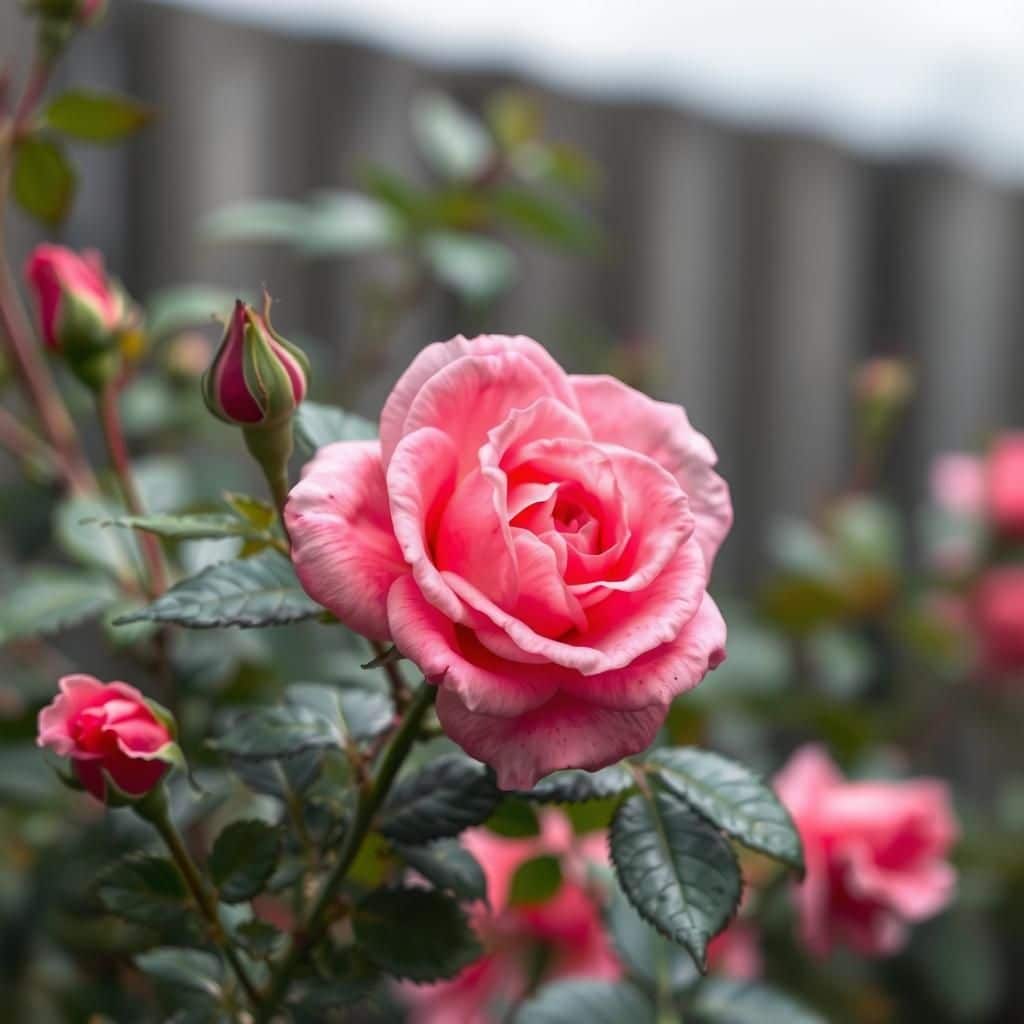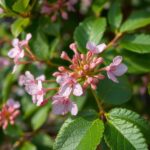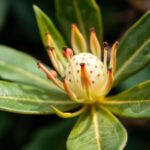Effective Rose Bush Black Spot Treatment: Tips and Solutions for Healthy Roses

Rose bushes are a beloved addition to any garden, admired for their vibrant blooms and enchanting fragrance. However, one of the most common challenges rose enthusiasts face is black spot, a fungal disease that can severely affect the health and beauty of these plants. Effective treatment is essential to restore vigor and prevent further damage. In this article, we will explore practical tips and solutions for combating black spot, ensuring your roses remain lush and thriving. From preventive measures to targeted treatments, discover how to keep your rose bushes healthy and resilient against this pervasive threat.
Effective Treatments for Black Spot Disease on Rose Bushes
Black spot disease, caused by the fungus Diplocarpon rosae, is a common issue for rose bush enthusiasts and can lead to significant damage if not managed properly. Effective treatment involves a combination of preventive measures and active interventions. One of the key strategies is to maintain good air circulation around the plants by pruning and spacing them adequately. Additionally, regular applications of fungicides that are specifically formulated to combat black spot can help control and eliminate the disease. It's also important to ensure that your roses are not overly watered and that you remove any infected leaves from the base of the plant to minimize the risk of further spread.
Understanding Black Spot Disease
Black spot disease is characterized by the appearance of dark spots on the leaves of rose bushes, which can lead to yellowing and premature leaf drop. The disease thrives in humid conditions, making spring and early summer its peak season. It can spread quickly through splashing water and contaminated garden tools. Understanding the life cycle of the fungus can help in implementing effective management practices, which include proper watering techniques and maintaining the overall health of the plant.
Preventive Measures for Black Spot
Preventing black spot disease involves a variety of cultural practices aimed at reducing moisture on the leaves and improving air circulation. This includes watering at the base of the plant rather than overhead, ensuring sufficient spacing between plants, and removing clutter from around the base of the roses. Additionally, mulching can help keep the soil moisture levels adequate without splashing water onto the foliage during rain or irrigation, which can encourage the spread of the fungal spores.
Fungicides for Black Spot Treatment
When black spot disease is identified, applying fungicides can be a highly effective measure. It is important to use products that are specifically labeled for rose bushes and to follow the manufacturer's instructions regarding application frequency and dosage. Some common fungicides include those containing chlorothalonil and myclobutanil. Regular application during the growing season can help keep the disease at bay, particularly after rain, which can wash away protective barriers.
Pruning and Cleaning Techniques
Regularly pruning your rose bushes is critical in managing black spot disease. By removing infected leaves and stems, you not only help reduce the spread of the fungus but also improve air circulation around the plant, which is essential for overall health. Cleaning up fallen leaves and debris around the base of the plant can further minimize potential re-infection. Always ensure that pruning tools are sterilized before and after use to prevent cross-contamination between plants.
Alternative Treatments and Organic Options
For those looking for more natural or organic treatments, options such as Neem oil and baking soda sprays can be effective against black spot disease. Neem oil works as both a fungicide and an insect repellent, while baking soda can alter the pH on the leaf surface, making it less hospitable for fungi. Regularly applying these treatments can help create an unfavorable environment for the disease to flourish, supporting the health of your rose bushes without harsh chemicals.
| Treatment Method | Type | Frequency |
|---|---|---|
| Fungicides | Chemical | Every 7-14 days |
| Neem Oil | Organic | Every 14 days |
| Baking Soda Spray | Organic | Every 2 weeks |
| Pruning | Cultural | As needed |
| Proper Watering Practices | Cultural | Ongoing |
What is the best spray for black spot roses?
:max_bytes(150000):strip_icc()/black-spot-on-roses-4125530_FINAL-fd284b33f87b463ab20f64aef38a462e.png)
The best spray for black spot roses often includes a combination of fungicides that effectively combat the disease. Black spot, caused by the fungus Diplocarpon rosae, presents as dark circles with fringed edges on the leaves, leading to premature leaf drop and weakening of the plant. Effective treatments can be both chemical and organic. Below, you'll find detailed information along with recommended products and strategies to manage this fungal infection.
Understanding Black Spot Disease
Black spot disease can be detrimental to rose plants, and understanding its lifecycle is crucial for effective management. The fungus thrives in warm, humid conditions, and its spores can spread through water splash or wind. Key points include:
See also:
- The disease affects leaves, causing them to turn yellow and drop.
- Infection can weaken the plant, leading to reduced vigor and fewer blooms.
- Awareness of environmental conditions can help in preventing outbreaks.
Best Chemical Sprays for Black Spot Roses
Chemical fungicides are generally the most effective for immediate control of black spot. Some popular options include chlorothalonil, propiconazole, and myclobutanil. These products work by inhibiting the growth of the fungus. Recommended actions are:
- Select a product labeled for black spot control on roses.
- Follow the manufacturer's instructions for application frequency and dosage.
- Apply during dry periods to maximize absorption and minimize runoff.
Effective Organic Alternatives
For those seeking a more environmentally friendly approach, several organic fungicides can help manage black spot. Options such as neem oil, bicarbonate solutions, and sulfur have shown effectiveness. Steps to consider include:
- Mix neem oil with water as directed, applying it every 7-14 days.
- Use a baking soda solution for a home remedy; combine 1 tablespoon of baking soda in a gallon of water with a drop of dish soap.
- Apply during early morning or late afternoon to avoid leaf burn.
Preventative Measures for Black Spot
Preventing black spot is crucial for maintaining healthy roses. Healthy cultural practices play a significant role in managing the disease. Key preventive strategies include:
- Ensure adequate air circulation around the plants by spacing them appropriately.
- Water at the base of the plants to avoid wetting the leaves.
- Remove and destroy infected leaves to reduce reinfection risk.
Timing and Application Tips
Proper timing and technique in the application of sprays can enhance effectiveness significantly. Consider these suggestions for optimal results:
- Begin treating roses at the first sign of black spot or as a preventive measure in early spring.
- Apply sprays on windless days to reduce drift and improve coverage.
- Rotate fungicides to prevent resistance development in the fungus.
What is used to treat a plant with rose black spot disease?
:max_bytes(150000):strip_icc()/black-spot-on-roses-4125530_FINAL-fd284b33f87b463ab20f64aef38a462e.png)
To treat a plant suffering from rose black spot disease, various methods can be employed, including cultural practices, chemical treatments, and organic solutions. Rose black spot, caused by the fungus Diplocarpon rosae, leads to characteristic black spots on the leaves, which can cause yellowing and premature leaf drop, affecting the overall health of the rose plant. Below are detailed approaches for treatment.
Using Chemical Fungicides
One of the most common methods for treating rose black spot disease is the application of chemical fungicides. These products are specifically designed to target the fungal spores responsible for the disease.
- Systemic fungicides penetrate the plant's tissues and provide long-lasting protection.
- Protective fungicides create a barrier on the leaf surface to prevent spores from infecting the plant.
- Application timing is crucial: apply fungicides at the first sign of symptoms and regularly during the growing season.
Implementing Cultural Practices
Cultural practices play a significant role in managing rose black spot disease. By promoting good plant hygiene and care, the risk of infection can be reduced.
- Watering practices: Water the base of the plants early in the day to minimize leaf wetness.
- Pruning: Regularly remove infected leaves and maintain good air circulation among the plants.
- Plant spacing: Ensure adequate spacing between roses to enhance airflow and reduce humidity.
Using Organic Treatments
For those seeking eco-friendly solutions, organic treatments can be effective in managing rose black spot disease. These methods often rely on natural ingredients that inhibit fungal growth.
- Neem oil: This natural fungicide disrupts the life cycle of the fungus and promotes plant health.
- Baking soda: A mixture of baking soda and water can create an alkaline environment that prevents fungal spores from germinating.
- Compost tea: Rich in beneficial microbes, compost tea can help enhance the plant's immune response to diseases.
Recognizing Symptoms Early
Early detection of rose black spot disease symptoms is key to effective treatment. Identifying the signs promptly can help in implementing the appropriate measures.
See also:
- Black spots on leaves are usually the first visible symptom that appears.
- Yellowing of leaves following the initial spotting is often an indication of advancing disease.
- Premature leaf drop: Infected leaves may fall off before the expected time, indicating the severity of the infection.
Preventive Measures
Prevention is crucial in managing rose black spot disease. Implementing preventive measures can significantly reduce the likelihood of infection.
- Choosing resistant varieties: Select rose cultivars known for their resistance to black spot.
- Maintaining soil health: Healthy, well-draining soil supports stronger plants that can better withstand diseases.
- Regular inspections: Frequent monitoring of your roses helps catch any issues before they escalate.
Is soapy water good for black spots on roses?
:max_bytes(150000):strip_icc()/black-spot-on-roses-4125530_FINAL-fd284b33f87b463ab20f64aef38a462e.png)
Soapy water can be an effective treatment for certain issues on roses, including black spots, which are often indicators of fungal infections such as black spot disease (Diplocarpon rosae). The use of soapy water is primarily attributed to its ability to disrupt the cell membranes of fungi and insects. Here’s a detailed exploration of its efficacy along with related topics.
Understanding Black Spots on Roses
Black spots on roses are primarily caused by fungal infections that thrive in warm and humid conditions. These spots can lead to the yellowing of leaves, defoliation, and overall plant stress, ultimately affecting the plant's growth and flowering capabilities. The following points summarize the characteristics of black spot disease:
- Symptoms: Black circular spots appear on leaves, often with fringed edges.
- Spread: Fungi spread through spores, often via water splashes or through the wind.
- Conditions: High humidity and poor air circulation contribute to the spread of black spots.
How Soapy Water Works on Fungal Infections
Soapy water acts as a surfactant, which reduces the surface tension of liquids, allowing the solution to better adhere to the leaves and penetrate the fungal spores. This action can help in controlling the spread of the infection effectively. Here are key aspects of how soapy water functions:
- Disruption: The soap disrupts the cell membranes of the fungi present on the plant.
- Adhesion: It ensures that the treatment sticks to the foliage longer, maximizing its effects.
- Safety: Soapy water is generally safe for plants and the environment when used in appropriate concentrations.
Preparing Soapy Water for Application
Creating a soapy water solution for roses is a straightforward process, but the correct concentration is crucial to avoid damage to the plants. The following steps will help in preparing it effectively:
- Choose the soap: Use a mild liquid soap with no additives, such as degreasers or fragrances.
- Mixing ratio: Combine 1-2 tablespoons of soap per gallon of water.
- Mix thoroughly: Ensure that the soap is well dissolved to prevent harm to the plant.
Application Techniques for Best Results
When applying soapy water to roses for treating black spots, it is important to do so effectively for optimal results. Consider the following application techniques:
- Time of day: Apply in the early morning or late afternoon to avoid leaf scorch.
- Coverage: Ensure thorough coverage on both the top and bottom surfaces of the leaves.
- Frequency: Repeat applications every 7-10 days until the infection clears.
Limitations and Considerations
While soapy water can be beneficial, it has limitations and considerations that are important to keep in mind. Here are a few points to consider:
- Persistent infections: Soapy water may not eliminate severe fungal infections and might need to be combined with fungicides.
- Plant sensitivity: Some plants may be sensitive to soap; it is advisable to test on a small area first.
- Water preferences: Excessive moisture can create an environment conducive to fungal growth; thus, explore better drainage options.
Questions from Our Readers
What causes black spots on rose bushes?
Black spots on rose bushes are primarily caused by a fungal disease known as Diplocarpon rosae. This fungus thrives in humid conditions and can spread rapidly, particularly during warm, wet weather. It typically manifests as black, circular lesions on the leaves, ultimately leading to leaf drop and weakened plants.
How can black spot be treated on rose bushes?
To treat black spot on rose bushes, it is essential to maintain proper plant hygiene by regularly removing infected leaves and debris. Additionally, applying fungicidal sprays specifically designed for roses can help control the spread of the disease. It's crucial to follow the instructions carefully to ensure effective treatment.
See also:
Are there any preventative measures for black spot on roses?
Yes, several preventative measures can help reduce the risk of black spot. These include planting resistant rose varieties, ensuring good air circulation around the plants, and avoiding overhead watering to keep foliage dry. Regular pruning and maintaining healthy soil also contribute to a robust defense against this fungal disease.
When should I apply treatment for black spot on my rose bushes?
It is best to apply treatment for black spot during the early stages of infection when the first symptoms appear. This allows for more effective control. Preventative fungicide applications can also be applied during the growing season, especially after periods of heavy rain or humidity, to minimize the chance of infection later on.

If you want to read more articles like Effective Rose Bush Black Spot Treatment: Tips and Solutions for Healthy Roses, we recommend you check out our Shrubs category.
Leave a Reply
Related Articles